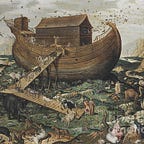Sydney sightings ∞ 2 ∞
Horse troughs outside Waverley cemetery
Sydney cadavers have the option of a sea view, something of a comfort during eternity. First among more than a few equals is Waverley’s muncipal cemetery (although its sister cemetery at South Head is a contender).
Founded in 1877, Waverley is best known for holding the remains of Henry Lawson, the Australian poet who was on our ten-dollar note until polymer conversion.
Lawson’s companion was convict forger Francis Greenway, architect of St James Church at the end of Phillip Street in Sydney.
The post-polymer note now has two poets, Banjo Patterson and Mary Gilmore, so I guess that’s progress.
The cemetery houses at least 11 US Civil War veterans and a tomb designed by Walter Burley Griffin, the founding architect of Canberra. More recently, Sydney identity George Freeman was buried there.
An attempt to raise funds by sponsorship has not been wholly successful. The grave of Jules Archibald — founder of the Bulletin magazine and the annual Archibald Prize for portraiture — was sponsored by the Bulletin, but the Bulletin has since itself died.
Yes, a film has been shot there: Mel Gibson’s Tim. In Melbourne, they do things differently; we were wandering through its cemetery when Nicolas Cage was making Ghost Rider.
This Sydney sighting is not about the cemetery itself, but a couple of features just outside the main entrance on the corner of Trafalgar & St Thomas Streets. (I assume the saint is the disciple Doubter.) They are a pair of horse troughs.
The troughs were installed after the death of and in memory of Amelia Hall. Hall was a first, the owner of the first private preparatory school in the area. The school site itself has something of a history. It was Waverley House, built by early businessman and promoter Barnett Levey. Levey liked Sir Walter Scott, so that’s how Bondi Beach can lay claim to Scotland.
The History of Waverley Municipality contains an item about ‘Miss Amelia Hall’s School at Waverley House’:
One of the early private schools with distinctive features was opened in the old Waverley House (now demolished) by Mss Amelia Hall in 1866. In the school she was ably assisted by her nephew, the late T.E. Hall. It was one of the most exclusive boys’ preparatory schools at that period. Miss Hall was an English woman who arrived in Sydney in 1852. She conducted the school for about 20 years and ran it on English school lines — the boys wearing Eton 15 uniforms and silk hats. Boys who were later to become leaders in State and Federal spheres were amongst the pupils, such as the late Sir Philip Street, Chief Justice and Lieutenant Governor, Sir Adrian Knox, Chief Justice of Australia, the Stephen Family and the Dr Barkers of medical fame. In a private letter written by Mrs Eleanor Robyns of ‘Elmwood’ 31 Penkivil Street, Bondi, December 20th 1928 to the late Captain Johnston of Waverley, she stated:
It was my privilege to be on the teaching staff of ‘Waverley House’ fifty four years ago (1874)… Waverley House was the principal preparatory school in the colony at the time. We had boys from all parts of Australia and Fiji.
Hall prospered, lending the fledgling (Waverley) council a thousand pounds to get itself up and running.
And she liked dogs. At least, this is the most sensible explanation for the smaller trough running beneath the main on each.
When you visit the cemetery, see if it still has the big sign asking people to leave their dogs outside. Now you know that at least they didn’t get thirsty.
